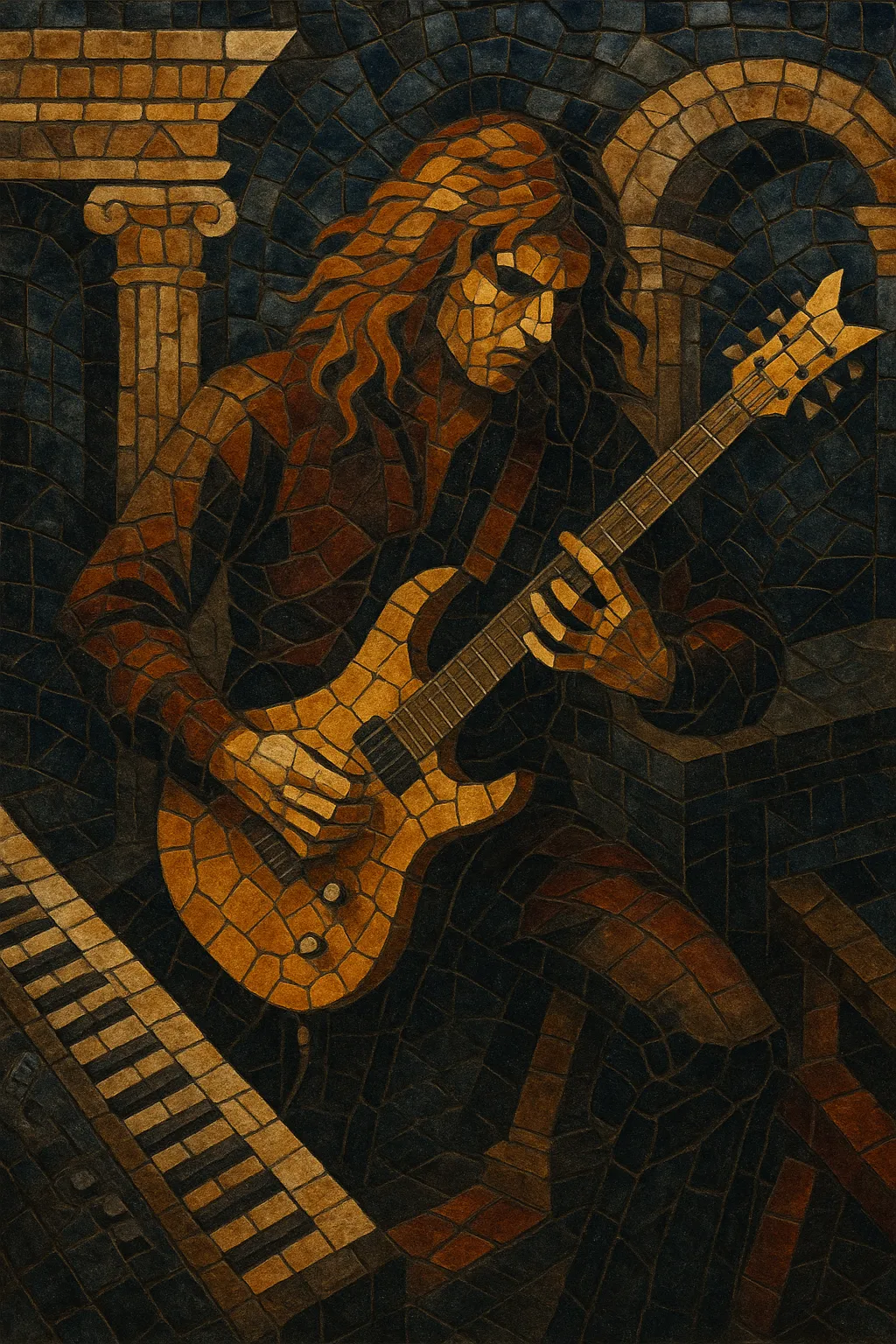Neoclassical metal is a subgenre of heavy metal that fuses metal’s high-gain power and speed with the harmony, counterpoint, and virtuosity of European classical music.
It emphasizes fast, ornate lead guitar and keyboard lines modeled on Baroque and Romantic-era idioms—think harmonic minor scales, diminished arpeggios, rapid sequences, pedal points, and dramatic cadences. Performers commonly use techniques like alternate picking, sweep picking, legato, tapping, and precise articulation at very high tempos.
Arrangements often feature guitar–keyboard unisons or call-and-response, brisk rhythms, and clear tonal centers, evoking the drama of composers such as Bach, Vivaldi, and Paganini while keeping metal’s aggression and drive.
Guitarists like Ritchie Blackmore and Uli Jon Roth helped establish a classical-minded approach to hard rock and early metal, introducing Baroque-like melodies and dramatic minor-key harmony. The style coalesced in the early 1980s through Swedish guitarist Yngwie Malmsteen, whose 1984 album “Rising Force” set the template with harmonic minor runs, diminished arpeggios, and violin-like phrasing at breakneck speeds.
Independent labels (notably Shrapnel Records) nurtured a wave of virtuosic players—Jason Becker, Marty Friedman, Tony MacAlpine, Paul Gilbert, Vinnie Moore—who codified the genre’s vocabulary. Albums from this era showcased blazing technique, guitar–keyboard unisons, and compositions inspired by Baroque forms (toccatas, inventions) and Romantic virtuoso showpieces.
Through bands like Stratovarius and Symphony X, neoclassical harmony and lead vocabulary seeped into power metal and progressive metal, adding keyboard-forward arrangements, orchestral colors, and large-scale song structures. The style also flourished in Japan and across Europe, where its melodic clarity and technical bravura resonated with audiences.
While pure neoclassical shred remained a niche, its techniques and grammar—sweep-picked arpeggios, harmonic minor modality, tightly synchronized leads—became part of the broader metal toolkit. Modern players and producers blend it with symphonic metal, progressive metal, and contemporary production, keeping the genre’s emphasis on expressive virtuosity alive in both band contexts and solo instrumental releases.


